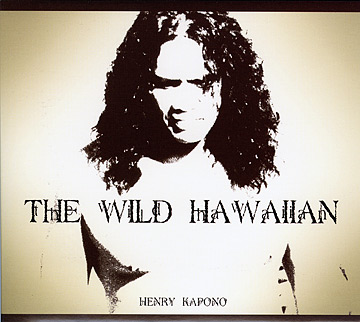
ECLECTIC
Henry Kapono's newest album, "The Wild Hawaiian," combines rock 'n' roll with Hawaiian percussion and chants.
|
|
Henry Kapono rocks in Hawaiian
If Henry Kapono were known only as half of Cecilio & Kapono, he would still be an important figure in local music. C&K defined a new style of contemporary music here in Hawaii in the early 1970s, and is on a very short list of local artists of any genre to be signed by a national record label after 1955.
"The Wild Hawaiian"
Henry Kapono
(Eclectic ECL 2006)
AUTOGRAPHS
Henry Kapono will be at Sam's Club stores this weekend:
Sunday: 11 a.m. to noon, 100 Kamehameha Hwy., Pearl City; 1 to 2 p.m., 750 Keeaumoku St., Honolulu
Also, as part of his regular performance schedule at Duke's Waikiki, Kapono will play from 4 to 6 p.m. Sunday at the Outrigger Waikiki Hotel, 2335 Kalakaua Ave., Suite 116, Honolulu. Call 922-2268.
www.henrykapono.com
|
But Kapono didn't stop with C&K. His first solo hit, "Stand in the Light," anticipated the rise of Jawaiian or "island music" by more than five years. "Dreamer Boy," his 1982 album with comic actor Rap Reiplinger, displayed his imagination as a storyteller and his range as a rocker.
Kapono received two Hoku awards in 1992 for "Broken Promise," a song he'd written in response to long-standing problems within the Hawaiian Homes program, but his self-titled album, "Kapono," in which he explored broader issues of Hawaiian sovereignty, was considered too "political" for play on local radio when it was released in 1993.
With all that history behind him, and much more on his résumé, Kapono takes another equally impressive step forward with this full-length album of rock music sung in Hawaiian.
Kapono establishes the viability of the concept with the first bars of "Na Ali'i" and goes from success to success with the songs that follow. He succeeds in placing familiar lyrics in a new musical context while remaining true to the traditions of Hawaiian percussion and chant.
Kapono approaches "Hi'ilawe" with an imaginative orchestral arrangement that gives it a rock feel but maintains the song's traditional spirit. He closes the album on a particularly powerful note with a treatment of "Ke Aloha O Ka Haku (The Queen's Prayer)" that starts acoustically and builds to a final electric guitar solo that suggests the queen's sorrow.
Two of his three original songs fit in well. "Hawai'i Aloha (A Mau Loa)" expresses his love for the islands. "Na Makua" shares childhood memories of visiting his parents' friends.
"Taboo," an original instrumental, is solid guitar rock, but without lyrics, it doesn't have that connection to the rest of the album.
Kapono completes this landmark album with annotation that shares his feelings about being a native Hawaiian and his reasons for doing this album now. A beautifully illustrated booklet also provides lyrics, translations and historical information for each song.
It seems almost certain that some tradition-bound listeners will find something to criticize about Kapono's approach to "Hi'ilawe," "He'eia" or even maybe "Eho Mai." There were, after all, those who felt that the Brothers Cazimero weren't playing it "right" back in the 1970s, and Richard Kauhi received similar criticism a generation or so earlier.
Hawaiian music has been adopting and adapting new ideas and new instruments for more than 200 years. The process continues with "The Wild Hawaiian."

